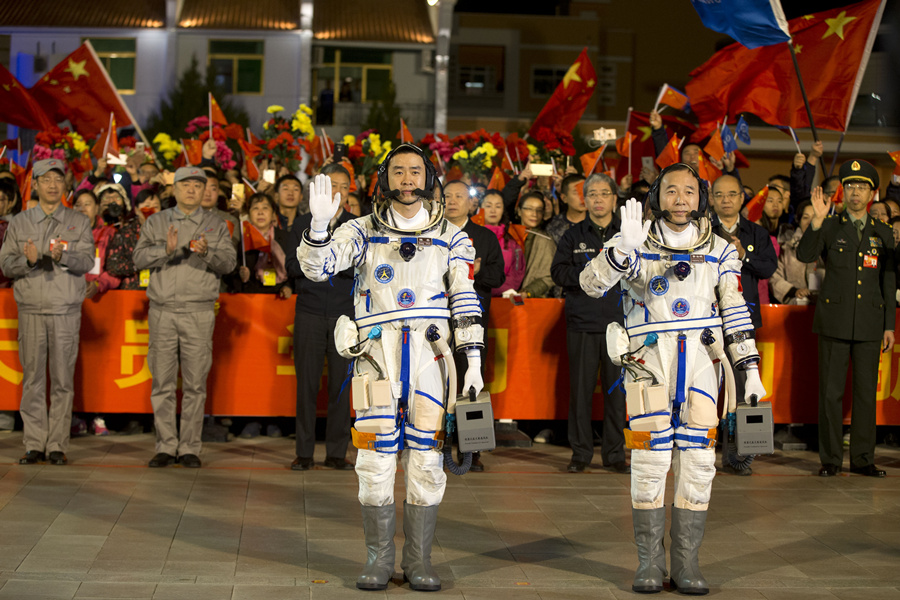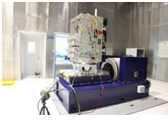News Center
Chinas Top 10 Space News of 2016 Announced
March 30, 2017
On January 6, 2017, China’s top 10 space news of 2016 was announced. The poll was co-sponsored by Space International, Satellite Application and the official WeChat of China Manned Space.
1 China’s Mars Exploration Program Officially Approved
On January 11, 2016, Chinese government officially approved the first Mars exploration operation. The Mars probe will be launched at appropriate time in 2020 to achieve the program objective of orbiting, landing and roving at one time. That is to explore the Mars through orbiting the Mars, landing on the Mars, roving on the Mars, and to investigate the soil environment and atmosphere of the Mars.

2 China Space Day Set Up
On March 8, 2016, China State Council ratified that the day of April 24 from 2016 was confirmed as China Space Day. The year of 2016 is also the 60th anniversary of the founding of China space industry. The series propaganda and science popularization activities were carried out on the subject of “Chinese Dream, Space Dream” on the first China Space Day, which had an extensive influence.

3 China’s First Mobile Communication Satellite Tiantong-1 Launched Successfully
On August 6, 2016, the first Chinese mobile communication satellite Tiantong-1 was launched successfully. This is the first satellite of China’s independently developed high-capacity geo-synchronous orbit (GEO) mobile communication satellite system, and is also an important part of China’s space information infrastructure. It will build a mobile communication network together with ground mobile communication system to supply audio and data communication service for all kinds of handheld and small mobile terminals from China and surrounding sea areas. The launch of the satellite fills the gap in the field of China’s mobile satellite communication. China’s mobile satellite communication steps into the mobile phone era.

4 China’s First Meter-level Resolution GF-3 Radar Satellite Launched Successfully
On August 10, 2016, GF-3 satellite was launched successfully. This is China’s first Synthetic Aperture Radar (SAR) imaging satellite of China High-resolution Earth Observation System (CHEOS), and is also China’s first C band multi-polarization SAR satellite with the resolution of up to one meter. The GF-3 satellite can monitor and survey the world-wide ocean and land information at all weather and all time, and can also serve many industries and operating departments, such as ocean, disaster mitigation, water conservancy and weather. The satellite has 12 imaging modes. Besides the traditional strip-map and scanning imaging modes, there are also wave imaging mode and global observation imaging mode which are specially for marine application. It is a SAR satellite with the most imaging modes in the world.

5 China Successfully Launches the World’s First Quantum Science Experiment Satellite MO-tse
On August 16, 2016, China successfully launched the first quantum science experiment satellite MO-tse in the world. The primary objective of the project is to conduct high-speed quantum key distribution experiment between satellite and ground with the help of satellite platform, and to conduct the wide-area quantum key network experiment in order to make a significant breakthrough in the aspect of practical application of space quantum communication. At the same time, the quantum entanglement distribution and quantum teleportation experiments were conducted at spatial scale as well as the completeness test of quantum mechanics.

6 China’s Tiangong-2 and Shenzhou-11 Human Flight Mission Achieves a Great Success
On September 15 and October 17, 2016, China’s Tiangong-2 space laboratory and Shenzhou-11 human spaceship were launched successively. On October 19, the rendezvous and docking of Shenzhou-11 and Tiangong-2 was smoothly implemented. Taikonauts Jing Haipeng and Chen Dong resided in the “heaven palace”. During the mission, a larger scale of space science and technology experiments were conducted. On November 18, the re-entry module of Shenzhou-11 spaceship landed safely at the predetermined area. The technologies of taikonaut mid-term residence, long-term ground support and protection were broken through during the mission, marking the important achievements of China’s space laboratory mission, laying a solid foundation for the building and operating of China’s space station as well as the taikonaut long-term residence.

7 China’s New Generation Large Launch Vehicle CZ-5 Has a Great Debut
On November 3, 2016, China’s new generation of large launch vehicle CZ-5 carried out its first flight mission at Wenchang Space Launch Site, Hainan Province, and successfully sent the payloads into predetermined orbit. The first flight of CZ-5 is a great leap of China’s liquid launch vehicle from 3.35m to 5m in diameter. The capacity of China’s launch vehicle of Low Earth Orbit (LEO) and Geostationary Transfer Orbit (GTO) is up to 25t and 14t level respectively. This marks that China steps into the ranks of the countries with large launch vehicle.

8 China Tests a Number of Advanced Technologies on Orbit, Including Magnetic-Focusing Hall Electric Propulsion System
On November 3, 2016, SJ-17 satellite was launched by CZ-5 launch vehicle. The satellite carried a magnetic-focusing Hall electric propulsion system that is developed by China independently. The on-orbit demonstration of the propulsion system was done.
On June 25, the scaled-down re-entry module of multi-purpose spaceship was sent into space by CZ-7 launch vehicle together with a number of advanced experiment payloads in order to do on-orbit test. The re-entry module therein verified new technologies and products on orbit for the first time, such as the new aerodynamic shape design, reuse design and new materials of the module, which laid the important foundation for design and key technology research of subsequent new human spaceship.

9 The World’s First Pulsar Test Satellite Launched Successfully
On November 10, 2016, China launched the world’s first pulsar test satellite. Its primary mission is to carry out pulsar’s space exploration and the test demonstration of its navigation technology system. It is the world’s first satellite conducting on-orbit exploration of pulsar X ray. It is used for verifying the performance and space environment adaptability of space-borne pulsar detector aboard the satellite, collecting the practical on-orbit pulsar data, attempting to verify the feasibility of the pulsar navigation technology system, laying the technology foundation for the pulsar exploration and technology system demonstration.

10 China Successfully Launches New-generation of Geostationary Orbit Meteorological Satellite FY-4
On December 11, 2016, as China’s first new generation of geostationary orbit meteorological satellite, FY-4 was launched successfully. The satellite adopts large-scale tri-axial stability of attitude control system. A variety of payloads are carried with the highest spatial resolution of 500m. The full disk imaging time resolution is up to 15min. FY-4 satellite has realized the upgrading and technical leap for China’s geostationary orbit meteorological satellite. It will observe atmosphere, clouds and space environment of China and adjacent areas with high time resolution, high spatial resolution and high spectral resolution, which will greatly improve the ability of weather and climate prediction.

